Years ago, there was no such thing as being a retirement investor. Retirees were often referred to as “pensioners” – they received a defined benefit from their retirement plan without ever having to worry about contributing money themselves or making investment management decisions. But today is different – retirees are mostly retirement investors with pensions being a thing of the past, so the responsibility to save and manage investments now rests upon employees rather than employers.
If your employer has a 401(k) or other defined contribution retirement plan that you are eligible to participate in, you may have some questions about getting started.
Getting started
In order to participate, you will first need to enroll in your company’s plan. This will happen either online or with a an enrollment form. Your HR contact should easily be able to explain the specific process that your employer follows. When enrolling, you’ll fill out some basic information like your name, date of birth, social security number, and a few other things. Then you’ll be asked four very important questions.
1. How much should I save?
Most 401(k) plans give you the choice of saving a specific dollar amount or percentage of your pay every paycheck. As an incentive to encourage employees to save for their future, most companies will match a certain amount of what you contribute. A typical match is something like: your employer will match 100% of what you contribute up to 3% of your pay, and then will match 50% of the next 2% that you contribute. In this example, easy math says that if you contribute 5% of your pay, your employer will contribute 4% of your pay, for a total of 9%. The match is actual free money for you and you should say yes to it! As far as how much you should save, at a bare minimum, we recommend most people begin by contributing the amount that will get you the full employer match. We also recommend that most people increase the amount they save over time. Most plans allow you to do this automatically, either through the plan website or by calling the 1-800 service number for the plan. A good rule of thumb is to set your savings rate to increase automatically once a year by at least 1%. The maximum 401(k) employee deferral for 2020 is $19,500 (plus a $6,500 additional catch-up provision for those over 50). If you can comfortably max out your retirement contribution, we encourage you to contribute the maximum.
2. Before tax or after tax?
The next question your enrollment form will ask is what type of contributions you want to make. You will have options like pre-tax and Roth. This simply describes the way in which money is deducted from your paycheck and put into your 401(k) account.
If your contributions are pre-tax, the amount of your salary deferral (contribution) is excluded from federal income taxes. When you start taking money out of the 401(k) during retirement, every penny you take out will be considered taxable income – exactly like your paycheck income now – if all of the contributions were made on a pre-tax basis.
If you select Roth contributions, you still pay taxes on the amount of your contribution. The benefit of paying taxes now is when you started taking money out of your Roth 401(k) later, every penny you take out will be tax-free income to you.
Choosing one of these options is in some sense making a bet on the future. If you are young and in a lower tax bracket, you are more likely to benefit from making Roth (after-tax) contributions because the tax hit is probably lower at this point than it will be when you are older and need to take money out of the 401(k). If you are older and in a higher tax bracket, you are more likely to benefit from making pre-tax contributions because the tax savings now may be more valuable than the tax cost later when you take money out of the 401(k). Other factors to consider could include the total amount of your retirement portfolio and other potential income sources in retirement.
Another option is splitting your contribution between pre-tax and Roth. For example, if you determine that you want to contribute 5% of your salary, you could choose 2% to go to pre-tax and 3% to go to Roth. It is important to note that all the employer match money goes into the pre-tax bucket regardless of which option you choose for your contribution.
3. What should I invest in?
The next question on your 401(k) enrollment form will be about choosing an investment option. The options are limited to whichever mutual funds your employer (or their advisor) has selected to be available. If you are more of a DIY person who loves digging into details, you can create your own custom investment strategy and manage it at your discretion. If you are the kind of person who wants someone to choose for you and you’d rather not have to think about it again, there are most likely options for you as well. One simple and popular investment option that your company’s plan might have is called a Target Date Fund. This is what you might call a set-it-and-forget-it strategy. Most Target Date Funds are offered in 5-year increments (2020, 2025, 2030, etc.). You can assume that the further out the fund is dated, the more aggressive that fund will be – and that it will automatically become more conservative as the years go by. Typically, people will invest in the dated fund that most closely matches the year they will turn age 65. The underlying objective is that your target retirement age coincides with the date of the fund, so your asset allocation evolves over time in a way that is appropriate for your life stage.
Other plans have “Conservative”, “Moderate”, and “Aggressive” models that are essentially pre-selected bundles of investments that you can select if you don’t want to spend time researching all the options for yourself. If you go this route, it is important to balance your tolerance for risk as well as your capacity to take risk. In other words, invest in an allocation that won’t keep you up at night but is also sensible for your age and retirement objectives.
4. If something happens to me, who gets my money?
This is an extremely important question that should be answered by everyone who participants in a 401(k) plan. This is called a beneficiary designation and it determines who gets your 401(k) in the event of your untimely death while still working. In general, 401(k) assets do not pass to your heirs by way of your will. They pass according to the beneficiary designation, which makes this a very important consideration. You can name anyone you want as beneficiary, or even an entity (like your favorite charity); however, since Texas is a community property state, expect your spouse to be required to sign off on any non-spouse beneficiaries. Also, make sure that your beneficiary designation matches (or meshes with) the rest of your estate plan.
Summary
While there are many other considerations when getting started in a 401(k) plan, these four decisions are likely the most pertinent. Get it set up, look at your statements (or login) occasionally, and make changes to any of the four decisions as needed. A few years from now, you’ll likely look at your retirement plan balance and have far more than you thought you would on the day you got started. And when it comes to getting started, why not today?
*The opinions voiced in this material are for general information and are not intended to provide specific advice or recommendations for any individual. The principal value of a target fund is not guaranteed at any time, including at the target date.







